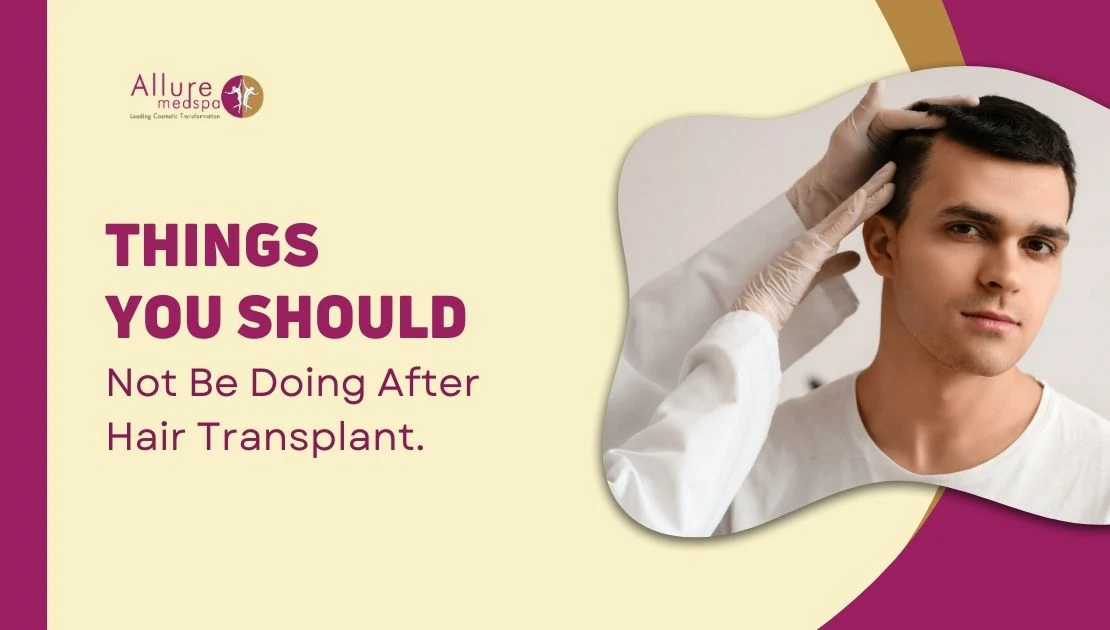Hair Transplant Aftercare: What to Do (and Avoid) for the Best Results
A successful hair transplant depends on expert surgery and smart aftercare. Use this clear, copy-paste–ready guide to protect new grafts, heal faster, and set yourself up for long-term growth.On this page
- 1. Don’t Sleep Flat on Your Stomach
- 2. Delay Your Hair-Washing Routine
- 3. Say No to Hair Styling Products
- 4. Stay Hydrated
- 5. Avoid Tight Caps, Hats, or Weaves
- 6. Protect Your Scalp from Sun & Ice
- 7. Avoid Strenuous Exercise
- 8. Quit Smoking & Alcohol
- Conclusion
- FAQs
1. Don’t Sleep Flat on Your Stomach
Swelling is common after surgery, and your sleep position matters.
- Sleep on your back with your head elevated ~45° (recliner or stacked pillows).
- Avoid sleeping on your stomach or sides for the first 7 days.
- Use a body pillow or weighted blanket to reduce tossing and turning.
2. Delay Your Hair-Washing Routine
Let the scalp rest for at least 48 hours. From day 3:
- Use a mild, sulfate-free shampoo diluted in water.
- Pour gently; do not rub or scratch. Rinse with low pressure.
- Pat dry with a soft towel—no friction or heat styling.
Follow any specific aftercare products or timing your surgeon provides.
3. Say No to Hair Styling Products
Gels, sprays, and waxes can irritate a sensitive scalp and stress new grafts.
- Avoid for at least 1 month post-op.
- When cleared, choose alcohol- and sulfate-free products.
4. Stay Hydrated
- Aim for 8–10 glasses of water daily (pale-yellow urine = good hydration).
- Limit dehydrators (excess caffeine, sugary drinks).
5. Avoid Tight Caps, Hats, or Weaves
- No tight caps, hats, wigs, or weaves for 3–4 weeks.
- After initial healing, use a loose, breathable hat outdoors.
6. Protect Your Scalp from Sun and Ice
- For the first 5 days, avoid direct sun exposure.
- Do not apply ice directly to grafted areas. Ask your surgeon about safe swelling control.
7. Avoid Strenuous Exercise
Keep sweat, heat, and blood pressure spikes to a minimum early on.
- Avoid running, heavy lifting, HIIT, sauna/steam, and swimming for ~4 weeks.
- Opt for light walking until you’re cleared to resume full workouts.
8. Quit Smoking and Alcohol
- Alcohol dehydrates and can raise blood pressure—pause for at least a month.
- Smoking/nicotine restricts blood flow and delays healing—quitting yields better graft survival.
Conclusion
Great surgery starts the journey; great aftercare finishes it. Sleep smart, wash gently, protect your scalp, and go easy on exercise. Be patient—most people see early growth at 3–4 months and full results by 9–12 months.
Frequently Asked Questions (FAQs)
Q1. When will my transplanted hair start to grow?
Ans. Initial growth is common around 3–4 months; full results typically appear by 9–12 months.
Q2. Can I wear a cap or hat after a hair transplant?
Ans. Avoid tight caps for 3–4 weeks. After that, use a loose, breathable hat if needed.
Q3. Is shedding normal after surgery?
Ans. Yes—“shock loss” can occur in the first few weeks. It’s temporary; new hair grows from the follicles.
Q4. When can I return to work?
Ans. Many return to non-physical work in 3–5 days, depending on personal recovery and visibility concerns.
Q5. How do I know if my transplant was successful?
Ans. Success = graft survival + natural growth pattern. Keep follow-ups with your surgeon to track density and progress.







